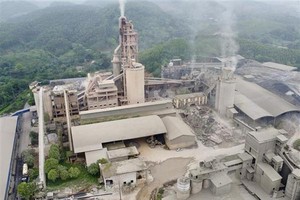The Mekong delta has advantage in planting fruits for export but the usual refrain “bumper harvest, cheap price” repeats every year, causing despairs amongst farmers. Accordingly, it is an urgent matter to help farmers in the region to find out new way for sustainable development.

Recently the drop of dragon fruit price kept farmers in Vinh Long and Tien Giang provinces on tenterhooks. Farmer Nguyen Van Nam in Binh Minh Town in Vinh Long Province complained because the land in the town is not suitable for planting rice hence many farmers switched to growing dragon fruit, but prices of the fruit went down drastically when harvesting.
Farmer Tran Van Tam in Cho Gao district in Tien Giang province said dragon fruit with red flesh fetches VND5,000-6,000 per kilogram while dragon with white flesh is sold at VND2,000-4,000 yet traders are still reluctant to buy.
According to the People’s Committee in Cho Gao district inhabitants here live on selling dragon, therefore, they are so worried at the price drop. Additionally, most dragon fruit get diseased; its skin color looks bad. As a result, it is just consumed in domestically while it is bumper crop this year, the price of the fruit fell much more.
Meantime, farmers in Cho Lach, Chau Thanh, and Mo Cay Bac in Ben Tre province cut down all trees in their orchards as last time salinity intrusion destroyed all.
Farmer Tran Van Dam in Tan Phu Commune in Chau Thanh district said that he earned tens of million dong from selling rambutan in his three-acre orchard ( one acre= 1,000 meter square) last year, but rambutan trees were dying gradually because the serious salinity intrusion this year.
He had to cut down and switched to growing siamese custard apple. Similarly, farmer Nguyen Van Hung in Vinh Thanh commune in Cho Lach district bitterly said farmers both endure bumper crop, cheap price and also salinity intrusion this year.
Head of the section of Agriculture and Rural Development in Cho Lach district Dr. Bui Thanh Lien said that by latest statistics, around 500 hectare orchard in the district were destroyed by salinity intrusion, causing loss of billions for farmers. Authorities can just help them on technique and compensation of VND2-4 million per hectare to grow other trees.
According to the Institute for Southern Fruit Research, the Mekong delta province has a total of 147,813 ha devoted for growing 6 speciality fruits including 39,848ha for growing mango; 29,532ha for orange; 25,000ha for grapefruit; 13,000 for durian and 7,000 for dragon fruit.
Export turnover of veggies and fruits had increased impressively. In 2015 export turnover of vegetables and fruits reached US$1.8 billion.
Vietnamese veggies are sold in 50 nations and territories. Vietnamese fruits and vegetables are even sold in difficult markets including Japan, the US and South Korea.
There has been great potential for fruit exports. The most urgent matter is that re-structuring production to adapt to new challenges and climate changes.
Head of the Institute for Southern Fruit Research Dr. Nguyen Van Hoa said that it is urgent to apply technologies to reduce loss when climate change and salinity intrusion increase, scientists have made researches to create some veggies and fruits which can endure harsh weather and nest time they will transfer more seedlings and technologies to farmers.
























